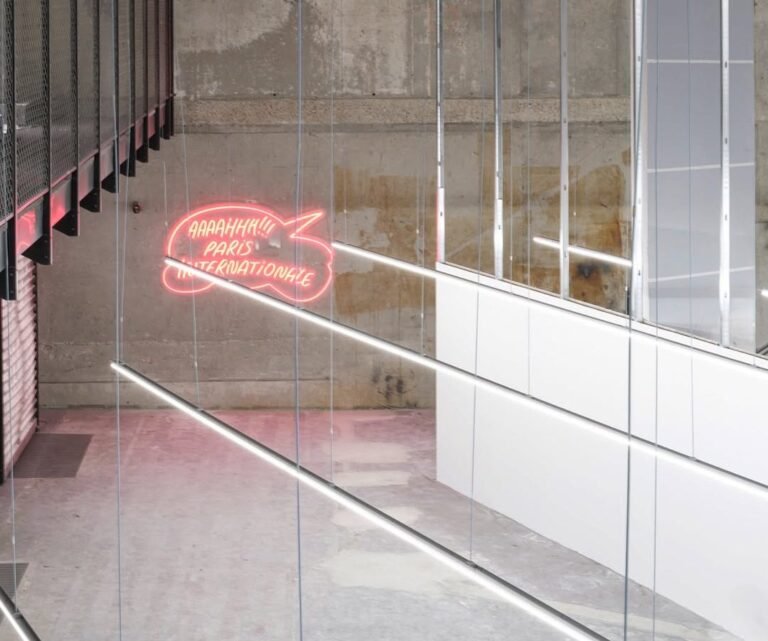
As operating costs rise and the art world grows without a matching increase in demand, many dealers—especially younger ones trying to enter an already saturated system—now find themselves trapped in an industry that has outpaced its own capacity: too large, too costly and too reliant on a fair model that no longer serves them. In response, a new generation of dealer-led art fairs has emerged—smaller, collaborative and self-organized alternatives to the institutional circuit.
Seeing how many of these gallery-led initiatives are multiplying this year in Paris, one can’t help but draw parallels to the Salon des Refusés—a pushback against entrenched hierarchies and the inefficiencies of an overgrown market, much like those 19th-century salons that sought a new path outside the academic establishment and its gatekeepers. Today’s dealers are reclaiming agency and redefining visibility on their own terms, sketching a more sustainable, cooperative future—one that restores room for dialogue, experimentation and discovery beyond the relentless churn of the blue-chip-dominated, corporate fair circuit.
7 rue Froissart & Places des Vosges


7 rue Froissart—a name that conveniently doubles as its address—is a new satellite fair founded by Brigitte Mulholland and Sara Maria Salamone. The project reflects their shared commitment to rethinking the art fair model through transparency, equity and mutual support. “We launched 7 rue Froissart to offer a collaborative, accessible alternative to the traditional art fair model. Free and unsponsored, the event prioritizes transparency, community and meaningful engagement over competition,” Salamone told Observer. Featuring 11 galleries with distinct programs alongside a collaborative group sculpture exhibition, the fair aims to foster genuine conversation and connection among collectors, curators and artists in Paris. “By emphasizing joy, inclusivity and international collaboration, 7 rue Froissart shows how thoughtful, low-cost alternatives can complement conventional fairs while supporting emerging and underrepresented artists.”
By 7 p.m. on opening day (Oct. 19), the newly launched fair had already drawn steady crowds—momentum that carried into the next day. Salamone’s Queens-based gallery Mrs. presented works by three of her leading artists—Elizabeth Atterbury, Kemi Onabulé and Robert Zehnder—all resonating with Paris audiences. Nearby, Parisian co-founder Brigitte Mulholland showcased expressive paintings by Raphaëlle Bertran, each priced under €10,000. Other participants included dynamic young spaces such as London’s Chilli, Los Angeles’ Gattopardo and New York’s Sliphouse, alongside Dimin Gallery, a veteran among emerging-market dealers presenting a curated mix from its program, including works by Stephen Thorpe, Michelle Im, Strauss Bourque-LaFrance, Chase Biado, Justine Hill, Elena Redmond, Natalia Baranowska and Taj Poscé.


Opening the next day (Oct. 20), Place des Vosges, a boutique fair founded by L.A. dealer Chris Sharp who is also behind Post-Fair in Santa Monica, staged inside an elegant apartment on the historic square at 26 Place des Vosges. “This is the second year we’ve done Place des Vosges. Post was really a byproduct of it,” Sharp told Observer. Inspired by projects like Basel Social Club, The Independent and Material Art Fair, Place des Vosges continues the tradition of gallerists reinventing the art fair format at a more intimate, sustainable scale. “It’s compact, cost-friendly and organized in a gorgeous setting overlooking one of Paris’s most beautiful squares,” he said. “It represents an attempt to obviate the risk of the current art fair model by sharing it more evenly among participants.”


Sharp presented work by Arizona-based artist Ishi Glinsky—sculptural wall reliefs inspired by Disney characters and traditional Native American techniques, reimagined through a critical lens examining cultural appropriation and the commodification of Indigenous craft within the tourist economy. These jewel-like works stood out for their intricacy and wit; by the second day, Sharp had sold two of the three pieces he brought.
Several participating dealers reported similar early success, Sharp told Observer. Among them, Tribeca-based Margot Samel showed evocative paintings by Brooklyn-based artist Cathleen Clarke, whose lush, dreamlike canvases—hovering between memory and imagination—captivated collectors with their delicate balance of emotional intimacy and surreal lyricism.
Clearly, organizing a fair while managing the daily demands of running a gallery comes with its own challenges, Sharp admitted. Fortunately, he has a capable assistant in France who handles much of the logistics, but he acknowledged, “It’s a lot for my small but very organized team to handle. I’m not sure how much longer we’ll keep doing it—but for now, it feels right.”


Paris Internationale, the first alternative
While the biggest gossip from Art Basel’s avant-première VIP preview may have been that Carla Bruni, ex-wife of former French president Nicolas Sarkozy, arrived with her new boyfriend the same day her ex-husband went to jail, the real event on Wednesday was the opening of Paris Internationale—the historic Parisian alternative fair celebrating its 10th anniversary. Founded in 2015, long before “gallery-led” fairs became fashionable, it anticipated the cooperative model that would later rise in opposition to the veteran blue-chip establishment. As director Silvia Ammon told Observer in an interview ahead of this edition, the fair grew from “a shared intuition that the traditional art fair model had become too rigid—overly formatted, disconnected from the realities of artists and galleries. We wanted to build something more organic and human: a fair conceived by galleries for galleries, where collaboration, experimentation and genuine dialogue between artists and their audiences could occur.”


This year, Paris Internationale affirmed its status as one of the most compelling fairs for discovery, curatorial experimentation and cross-generational dialogue. Now set in a central yet raw architectural space just off the Champs-Élysées, its youthful energy offered a striking contrast to the polished opulence of the surrounding blue-chip galleries on Avenue Matignon and the nearby auction houses.
Right at the entrance, Company Gallery set the tone with a sharp presentation that captured what makes Paris Internationale distinctive: a platform where collectors can still acquire works at fair prices from artists who often achieve market acceleration soon after. The New York gallery showcased a hauntingly visceral painting by Ambera Wellmann, whom they continue to co-represent with Hauser & Wirth following their widely discussed two-venue collaboration in September. Nearby, Sylvie Fleury’s ironic glam gestures—now confidently navigating both institutional and commercial contexts—delivered a witty, pop-inflected critique. Her white canvas depicting a cartoon heel screaming “I walked on Carl Andre” blended humor and subversion in a subtle reflection on gender dynamics, the controversies surrounding Andre’s legacy and likely his implication in Ana Mendieta’s death.


Nearby, Champs Lacolombe (Biarritz/London) turned its focus to the body and femininity with a rare solo presentation of Barbara Hammer, a rediscovered pioneer of queer video art—and one of the few photography-centered booths of the week. Hammer left her husband in 1968 and spent years traveling across the U.S., documenting queer communities through erotic, radical portraits that expanded the language of avant-garde film. With a career spanning more than fifty years, her work has only recently received long-overdue institutional recognition, with holdings in MoMA, Centre Pompidou, the Whitney and the Smithsonian American Art Museum. The booth featured lyrical photographs from the 1970s alongside rare collages and her first video, Schizy (1968)—a pivotal work marking both artistic and personal transformation. Priced between €2,000 for editions and €10,000 for unique prints, the works portrayed her lovers, travels and kinships—tender, unfiltered portraits of queer life that reject spectacle in favor of vulnerability and truth.


Shanghai’s Lidseen Gallery, known for its sharp eye for emerging talent, sold out its presentation of psychologically charged works by Danish artist Søren Arildsen. The pieces were shown alongside dreamlike paintings by Chinese artist Lu Junyi and stark black-and-white abstractions by South Korean artist Shumu—all under 30.
Standing out for its quiet intensity, Stereo Gallery from Warsaw presented Polish artist Wojciech Bąkowski’s suspended existential narratives. Originally trained in animation, Bąkowski is a central figure in the Poznań scene whose multidisciplinary practice merges film, poetry, sound and performance. His charcoal-on-cardboard diptychs—priced €6,000-7,000—translated his introspective worlds of memory, isolation and perception into restrained visual poetry. His diptych The End of Route (2025), sold early for €7,000, distilled his signature tension between the mechanical and the intimate.


Shanghai’s Don Gallery occupied an entire wall with taped papers reading, “Everything is fine, only time was never ours.” What first appeared to be a conceptual statement revealed a more pragmatic truth: the gallery’s shipment was still stuck in customs. Turning inconvenience into irony, artist Zhang Ruyi—known for her post-industrial installations—transformed delay into artwork.
Upstairs, the fair’s new layout allowed for larger installations and video works. Fitzpatrick Gallery presented Mathias Altmann’s glowing light sculptures—most notably a suspended green pharmacy cross, both relic and ghost of the urban psyche, evoking the isolation and endurance of post-pandemic cities.
More discoveries followed, including General Expenses, a young Mexico City gallery making its Paris debut. Its witty post-capitalist presentation featured No Signal Antenna (2025) by Marek Wolfryd—chromated antennae that fail to transmit, priced around €5,000-6,000. The work offered a layered critique of consumer culture, communication and the art market’s whitewashing mechanisms. The gallery also placed a distorted corporeal piece by Ellen Hanson with an American institution and drew attention for Angela Leyna’s haunting paintings derived from A.I. interpretations of her father’s photographs of “degenerate” children—translated back into wax and linen, merging digital and tactile materiality.


Toronto’s Cooper Cole showcased Afghan artist Hangama Amiri’s colorful textile narratives—intimate yet political tapestries that weave together women’s lives, identity and memory—alongside embroidered works by Indo-Canadian artist Jagdeep Raina, who reimagines folklore and queer mythologies. With recent acquisitions by the National Gallery of Canada, Yale University Art Gallery and Istanbul Modern, his works here ranged from €6,500-27,000.
Elsewhere, Canary Island artist Raisa Maudit revisited the erased histories of the medieval Beguines—proto-feminist communities that flourished in the 13th century and endured for centuries as self-organized societies despite persecution and erasure. Through research-based installations merging speculative archaeology, historical reconstruction and ritual performance, Maudit reactivated this lineage as both metaphor and method—linking the Beguines’ refusal of hierarchy to today’s post-capitalist fatigue. Her works, where bodies become relics and machines hum like new gods, traced a spiral between past and future collapse. For Maudit, faith transforms into resistance, knowledge and care. “Collecting traces of dissidents,” she said, her practice impersonates and reembodies suppressed stories through imaginative world-building that restores forgotten voices. The Beguines reemerge not as relics but as living codes—whispers across centuries reminding us how easily collective rituals of connection are lost to modern noise.


At Galerie Hussenot, physical vulnerability and mobility took center stage with visceral abstract works by Korean artist Keunmin Lee—paintings oscillating between hallucination, obsession and bodily endurance, one of which sold early in the day. Nearby, Vacancy from Shanghai presented a series of canvases by French-Indonesian artist Ines Katamso, who works with natural pigments to map vegetal cell structures. Her rendering of science as spiritual—translating nonhuman systems into living geometry—found a resonant dialogue with two sculptures by Chinese and New York-based artist Shuyi Cao, whose practice embraces entropy as both method and metaphor, merging organic and artificial elements into fluid, hybrid compositions. Guided by intuition rather than control, Cao’s sculptural process mirrors the universe’s own logic, where randomness and transformation reveal an underlying, unknowable order and harmony.
Downstairs, LLANOS offered a fitting coda to this fluid journey through narrative and embodiment. The gallery presented a standout solo by Mexican artist Erik Tlaseca, a recent graduate of the Rijksakademie in Amsterdam, who uses the silhouette of the body as both medium and metaphor for identity’s constraints and projections. His dark, sensual figures—bound, contorted and reconfigured across paper and panel—evoke the tension between expression and repression, tracing the intimate landscapes of queer desire and pleasure often confined to liminal or hidden spaces. Priced between €3,200-10,000, the works were accompanied by love letters written from the margins—confessional notes to his mother and an imaginary vampire—inscribed with unfiltered authenticity and emotional urgency, offering a theatrical meditation on secrecy, intimacy and the private acts of identity revelation and resistance that persist in the shadows.




